Sugarbush—currently leased to Fat Stone Farm—managed in ways that help declining forest birds
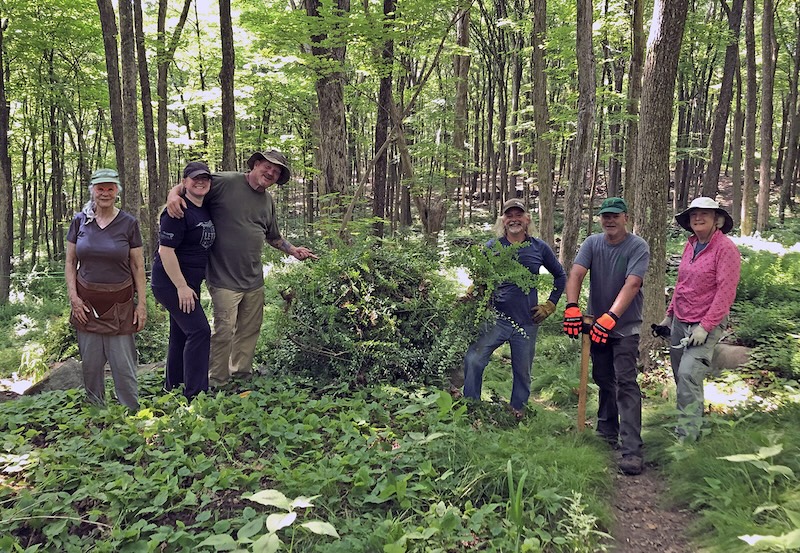
LYME, Conn. – Mount Archer Woods, a Town-owned preserve in Lyme, has been recognized by Audubon’s Bird-Friendly Maple program for its management of a sugarbush that is leased for tapping to Fat Stone Farm.
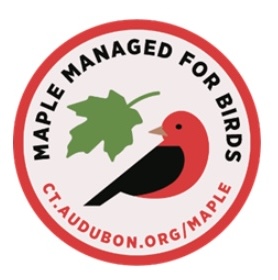
Through the Bird-Friendly Maple project (a collaborative effort between Audubon, Cornell, the New York State Maple Producers Association, and the Maple Syrup Producers Association of Connecticut), the Mount Archer Woods sugarbush—the forest area where maple syrup is produced—is managed in ways that provide more resilient bird habitat.
At 35 acres, the Mount Archer Woods sugarbush is currently the largest enrolled in Bird-Friendly Maple in Connecticut.
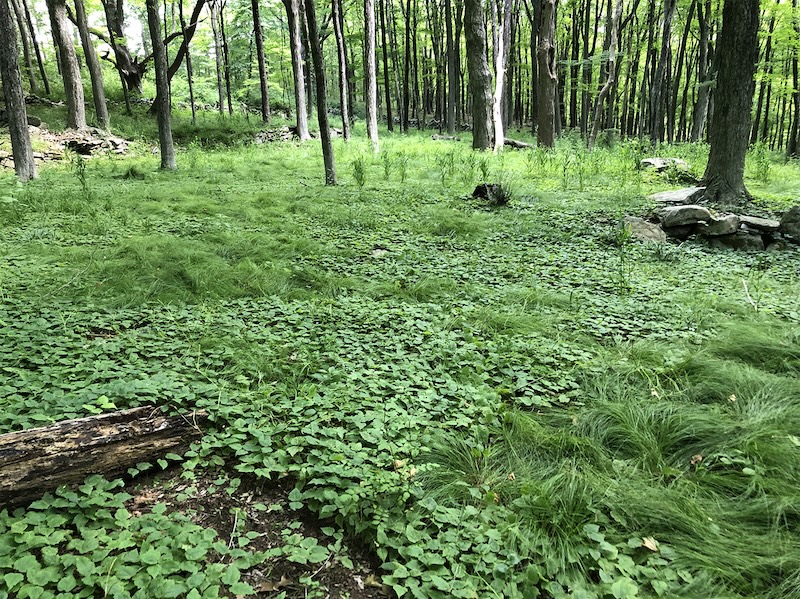
“Sugarbushes don’t just make for great maple syrup: As the production season winds down, they become nesting and foraging habitat for declining songbirds like the Scarlet Tanager and Wood Thrush,” said Suzanne Treyger, Senior Forest Program Manager for Audubon Connecticut and New York.
She notes, “On a wider scale, healthy forested landscapes provide benefits like carbon sequestration and storage, and watershed protection. By creating a more structurally and biologically diverse sugarbush, maple producers can play a vital role in conservation that benefits birds and people,”
As a recognized sugarbush, this area of the preserve is managed in ways that help these birds raise the next generation of their species.
What makes a bird-friendly sugarbush?
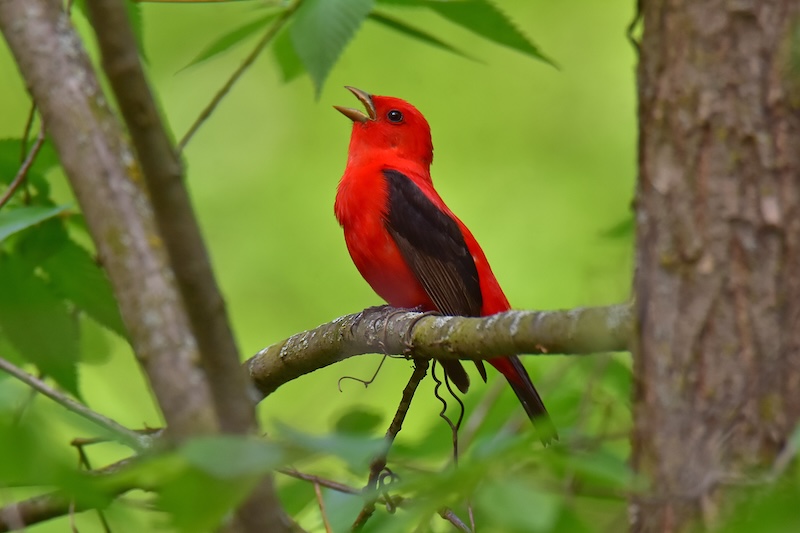
- Young trees and shrubs provide cover, food, and nesting sites for Black-throated Blue Warbler and Wood Thrush.
- Snags (dead trees) are left standing to provide nesting sites for woodpeckers and White-breasted Nuthatch, and insects for Scarlet Tanager.
- Downed trees and other woody material are left on the forest floor for birds like the Ovenbird and Ruffed Grouse to take cover, nest, and forage.
“We take great pride in the recognition by Audubon’s Bird-Friendly Maple program of the sugarbush area at Mt Archer Woods,” said Lyme Open Space Coordinator Wendolyn Hill.
She continued, “It is wonderful that in addition to supporting the traditional practice of maple sap collection, this forest can provide essential habitat for some of our most threatened songbirds.”
Hill explained, “The recommendations of the Audubon bird habitat assessment will be an invaluable guide for us in our efforts to protect and enhance the habitat there, as well as the land surrounding it.”

“Earning Audubon’s Bird-Friendly Maple designation goes hand-in-glove with our organic certification, which also requires a commitment to biodiversity and a healthy ecosystem,” said Bill Farrell, Founder of Fat Stone Farm.
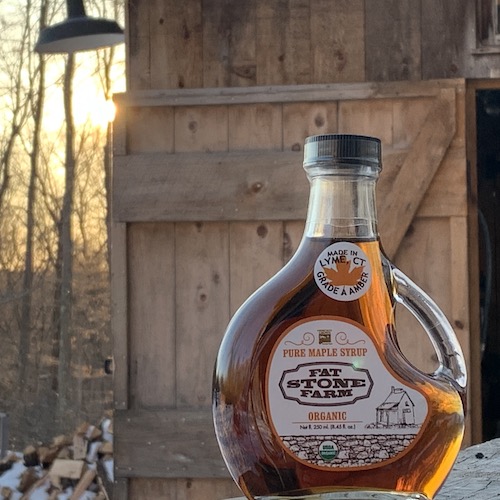
He added, “Lots of people in Lyme take healthy ecology seriously, and the presence of a variety of birds is one key indicator of environmental health. Earning Bird-Friendly Maple recognition shows how the work of many individuals is paying off.”
Farrell also commented that this year’s syrup is currently being bottled at the Farm.
For more information about Mount Archer Woods, visit this link.
For more information about Fat Stone Farm, visit this link.
About the National Audubon Society
The National Audubon Society is a leading nonprofit conservation organization with 120 years of science-based, community-driven impact, dedicated to protecting birds and the places they need, today and tomorrow. Birds are powerful indicators of our planet’s health, acting as sentinels that warn us of environmental change and inspire action.
Audubon works across the Western Hemisphere, driven by the understanding that what is good for birds is good for the planet. Through a collaborative, bipartisan approach across habitats, borders, and the political spectrum, Audubon drives meaningful and lasting conservation outcomes.
With 800 staff and over 1.9 million supporters, Audubon is a dynamic and ever-growing force committed to ensuring a better planet for both birds and people for generations to come.